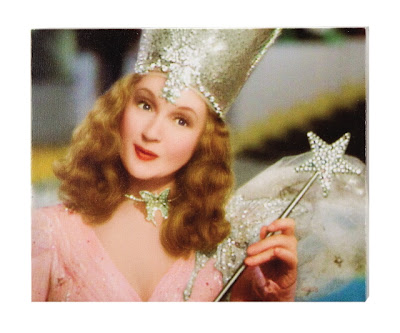In the movie The Wizard of Oz
We can find the same underlying moral about "being careful what you wish for" in Edith Nesbit Bland's Five Children and It. In turn-of-the-century England, five children find a Sand-Fairy (or "Psammead") that can grant them wishes. But the sand fairy is an irritable literalist, who interprets the wishes of the children exactly as they ask, and wild things happen (e.g., the children wish for great beauty, and then the people around them don't even recognize them).
The book I'd like to highlight today is based on a Celtic tale with this same classic theme, in a picture book for kids 4-8. It is Too Many Fairies
Her nonstop complaining soon brings four different fairies to her door to perform her chores. (A voice from outside calls each time: “Your luck has come! Open the door! Let me in and you'll work no more!”) They each in turn wash her dishes, sweep the floor, make the bed, and do her knitting. But all the help still can't stop her from complaining about the noisy racket the fairies are making: "clankety, clankety," "swishety, swishety," "lumpety, flumpety," and "clickety clickety."
"These fairies are driving me crazy!" she laments. But when she tells them to stop, they begin to reverse all of their chores, tearing everything apart. A visit to the village "wise one" teaches the complaining old woman a lesson of being careful about what you wish for and being content in your situation.
The ending is imaginative and clever and the sound effects of the "rackety" fairies and the Old Woman's whining complaints make it fun to read aloud. Your kids will definitely get the message!





